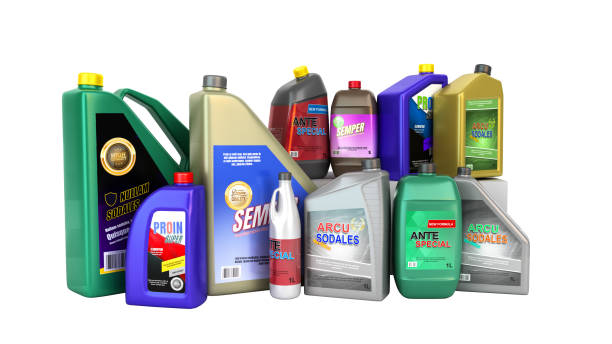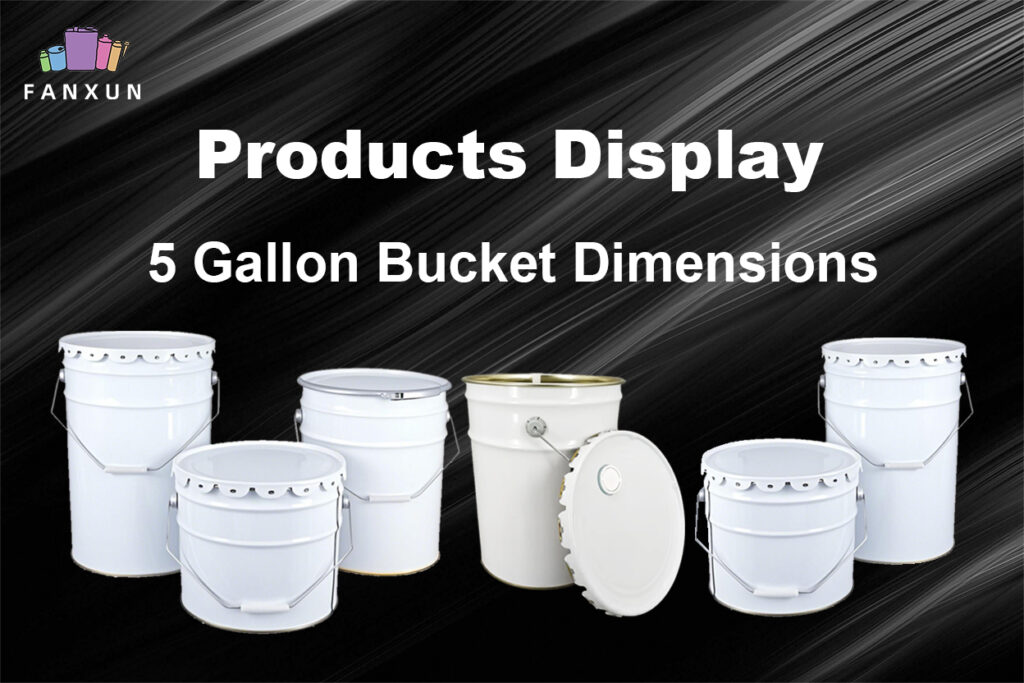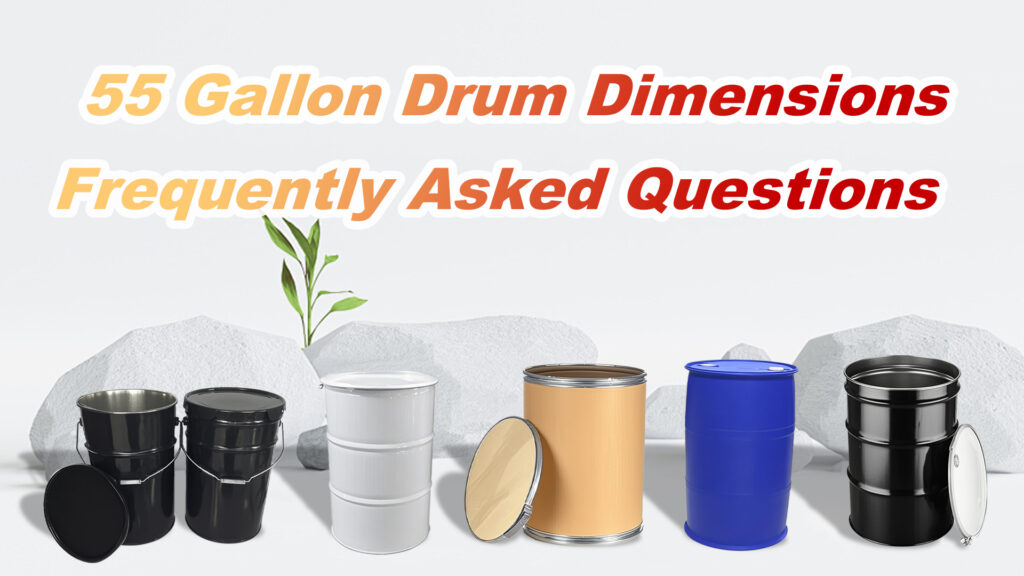We’ve all been there. You check your car’s oil dipstick, and it’s a bit low. You rummage through your garage, find a quart of engine oil, but wait – it’s a different brand than what’s already in your engine. Or perhaps your usual go-to brand is out of stock, and you’re staring at a shelf full of alternatives, wondering, “Can I mix engine oil brands?”
It’s a common question that can cause a fair bit of anxiety for any car owner who wants to do right by their vehicle. The short answer is… it’s complicated. While modern engine oils are more compatible than ever before, mixing brands isn’t always a straightforward “Sí” o “no.” This comprehensive guide will delve into the intricacies of mixing engine oil brands, helping you understand the potential implications and make informed decisions for your vehicle’s health.
Understanding the Lifeblood of Your Engine: Engine Oil Basics
Before we can tackle the mixing question, let’s refresh our understanding of what engine oil actually does and what it’s made of. This foundation is key to understanding why mixing can be a concern.
What Does Engine Oil Do? Engine oil is far more than just a lubricant. It performs several critical functions:
- Lubricación: This is its primary role. Oil forms a protective film between moving engine parts, reducing friction, wear, and heat generation. Think of pistons, crankshafts, and camshafts all moving at high speeds – without oil, they’d quickly grind themselves into oblivion.
- Cooling: While your car’s cooling system handles most of the heat, oil plays a vital role in cooling critical components like pistons and bearings, carrying heat away from these hot spots.
- Limpieza: Engine oil contains detergents and dispersants that help to clean the engine. Detergents neutralize acids and prevent the formation of sludge and deposits on engine surfaces. Dispersants hold contaminants like soot and combustion byproducts in suspension, preventing them from clumping together and clogging oil passages, carrying them to the oil filter.
- Sellando: Oil helps to seal the tiny gaps between piston rings and cylinder walls, maintaining compression and engine efficiency.
- Corrosion Protection: Additives in the oil form a protective barrier on metal surfaces, preventing rust and corrosion caused by moisture and acids.
Key Components of Engine Oil: Engine oil is a sophisticated blend, primarily consisting of two main components:
-
Base Oils (70-90% of the blend): This is the foundational lubricant. Base oils can be:
- Mineral Oil (Conventional Oil): Derived from refined crude petroleum. It’s the oldest type and generally the most affordable. It provides good lubrication but breaks down faster at high temperatures and tends to be thicker in cold weather compared to synthetics.
- Synthetic Oil: Chemically engineered in a lab from specific molecules. This process results in purer, more uniform molecules, offering superior performance across a wider range of temperatures, better resistance to breakdown (oxidation), and improved fuel economy. They are generally more expensive.
- Semi-Synthetic Oil (Synthetic Blend): A mixture of mineral and synthetic base oils (typically less than 30% synthetic). It aims to offer some of the benefits of synthetics (like better cold-weather starting and improved resistance to oxidation) at a price point closer to conventional oil.
-
Aditivos (10-30% of the blend): These chemicals are blended with the base oil to enhance its performance and provide properties that the base oil alone cannot deliver. The specific “additive package” is what often differentiates one brand or type of oil from another. Common additives include:
- Viscosity Index Improvers (VIIs): Help the oil maintain its optimal viscosity (thickness) across a range of temperatures. This means the oil won’t get too thin when hot or too thick when cold.
- Detergents: Keep engine surfaces clean by preventing deposit formation and neutralizing acids.
- Dispersants: Suspend and carry away contaminants like soot and sludge, preventing them from clumping and clogging oil passages.
- Anti-wear Agents: Form a protective film on metal surfaces to prevent wear when the oil film breaks down under extreme pressure (P.EJ., zinc dialkyldithiophosphate – ZDDP).
- Friction Modifiers: Reduce friction between moving parts, which can improve fuel economy.
- Antioxidants (Oxidation Inhibitors): Slow down the oil’s natural degradation process (oxidation) at high temperatures, extending its life.
- Corrosion Inhibitors: Protect metal surfaces from rust and corrosion.
- Anti-foam Agents: Prevent the oil from foaming, which can reduce its lubricating ability.
Understanding Viscosity (P.EJ., 5W-30, 10W-40): You’ll see codes like “5W-30” o “10W-40” on oil bottles. This is the oil’s SAE (Society of Automotive Engineers) viscosity grade.
- The number before the “W” (which stands for “Winter”) indicates the oil’s viscosity at cold temperatures. A lower number means the oil flows better when cold, providing quicker lubrication during startup, especially in chilly weather. Por ejemplo, a 5W oil flows better in the cold than a 10W oil.
- The second number indicates the oil’s viscosity at operating temperatures (around 100∘C o 212∘F). A higher number means the oil remains thicker at high temperatures, providing a robust protective film.
Your vehicle manufacturer specifies the recommended viscosity grade(s) for your engine. Using the wrong viscosity can lead to inadequate lubrication, increased wear, and reduced engine performance or fuel economy.
API, ACEA, ILSAC, and OEM Approvals: These are performance standards and specifications that tell you if an oil is suitable for your engine.
- API (American Petroleum Institute): Common in North America. For gasoline engines, current standards are API SP. For diesel engines, current standards are API CK-4 or FA-4.
- ACEA (Association des Constructeurs Européens d’Automobiles): European standards, often more stringent and specific than API. You’ll see codes like A3/B4, C3, etc..
- ILSAC (International Lubricant Standardization and Approval Committee): A joint effort by U.S. and Japanese auto manufacturers. The current standard is ILSAC GF-6.
- OEM (Original Equipment Manufacturer) Approvals: Many car manufacturers (P.EJ., BMW, Mercedes-Benz, VW, GM) have their own specific oil standards (P.EJ., BMW Longlife-04, MB 229.5, VW 504.00/507.00, GM dexos1). If your car requires an OEM-approved oil, it’s crucial to use one that meets that specific standard, especially while under warranty.
These standards ensure the oil meets certain performance criteria related to wear protection, deposit control, fuel economy, and emissions system compatibility.
Can You Mix Engine Oil Brands?
Ahora, with a better understanding of what goes into engine oil, let’s tackle the core question. The answer depends largely on the situation.
Scenario 1: Topping Up (Adding a Small Amount)
This is the most common scenario. Your oil is low, and you need to add a quart or less.
- General Consensus: In most cases, topping up a small amount of oil with a different brand is generally acceptable as a temporary measure, provided you pay close attention to a few critical factors.
- Matching Viscosity is Paramount: The most crucial factor is to use an oil of the same viscosity grade recommended by your vehicle manufacturer. If your car uses 5W-30, you should top it up with 5W-30. Mixing a 5W-30 with a 10W-40, for instance, will alter the overall viscosity of the oil in your engine, potentially leading to lubrication issues.
- Matching Performance Specifications (API/ACEA/ILSAC): Try to use an oil that meets the same or a more recent performance standard (P.EJ., API SP if your car currently has API SN). This ensures the top-up oil has at least the minimum protective qualities your engine requires. If your car requires a specific OEM approval, try to find a top-up oil that also meets that standard, though this can be harder in a pinch.
- Mixing Base Oil Types (Mineral with Synthetic for Topping Up):
- Synthetic with Synthetic (Different Brands): Generally fine if viscosities and specs match.
- Conventional with Conventional (Different Brands): Also generally fine if viscosities and specs match.
- Adding Synthetic to Conventional: This is usually okay for topping up. It won’t harm your engine; you’re essentially creating a small amount of semi-synthetic blend. The synthetic oil might even slightly boost the conventional oil’s performance.
- Adding Conventional to Synthetic: Also generally acceptable for a small top-up. Sin embargo, you will slightly dilute the benefits of the full synthetic fill (like its extended drain interval capability or superior high-temperature performance).
- Potential Risks of Topping Up with a Different Brand:
- Additive Incompatibility (Clash): This is the main theoretical concern. Each oil brand uses a proprietary additive package designed to work synergistically. Mixing oils podría lead to additives reacting negatively, potentially reducing their effectiveness or even leading to deposit formation. Sin embargo, with modern oils that meet industry standards (API, ACEA), the risk of a severe additive clash from a small top-up is considered very low. Oil companies formulate their products to be generally compatible with other oils meeting the same standards.
- Slight Performance Degradation: The mixed oil might not perform quite as optimally as a single, consistent brand and type. Sin embargo, for a small top-up, this is unlikely to be noticeable or cause significant issues.
In an emergency, having slightly mixed oil of the correct viscosity is almost always better than running your engine dangerously low on oil. Low oil levels can lead to catastrophic engine damage due to oil starvation.
Scenario 2: Full Oil Change (Using a Mix of Brands for the Entire Fill)
This refers to intentionally mixing larger quantities of different oil brands, perhaps to use up leftover bottles or because you can’t get enough of one brand.
- General Recommendation: This is not recommended.
- Why Avoid Mixing for a Full Fill?
- Unpredictable Additive Chemistry: While a small top-up might not cause major issues, a 50/50 mix (or similar) of different brands means you’re creating a completely new, untested blend of additive packages. The additives might not work together as intended. One brand’s detergents might interfere with another’s anti-wear agents, Por ejemplo. You won’t know the final performance characteristics of this custom blend.
- Compromised Performance: You’re essentially diluting the specific benefits each oil was formulated to provide. The resulting mixture is unlikely to perform as well as either of the individual oils would have on their own. You might not get the advertised fuel economy, wear protection, or cleaning power.
- Voiding Vehicle Warranty: Some vehicle manufacturers specify that only oils meeting their exact OEM approvals should be used. Using a mixture, especially if it leads to an engine problem, could potentially give them grounds to deny a warranty claim. It’s always best to check your owner’s manual and warranty terms.
- Reduced Oil Life: The lifespan of the mixed oil could be shorter than that of the individual oils. The antioxidants or other life-extending additives might not be as effective in a mixed environment.
- No Performance Guarantee: Oil manufacturers formulate and test their oils as a complete package. They guarantee the performance of their aceite, not a cocktail of their oil mixed with a competitor’s.
What About Mixing Different Viscosities (Weights) of the Same Brand? Let’s say you have some 5W-20 and some 5W-30 of the same brand.
- Generally not recommended for optimal performance. While they are from the same brand and likely have compatible additive chemistries, mixing viscosities will result in an oil with an intermediate and unpredictable viscosity. Your engine is designed for a specific viscosity range. It’s always best to stick to the manufacturer’s recommended grade. If you absolutely had to in an emergency, it’s less risky than mixing brands AND viscosities, but you should aim for an oil change with the correct grade as soon as possible.
What About Mixing Conventional and Synthetic Oil for a Full Fill? This is essentially what semi-synthetic oils are.
- Topping Up: As mentioned, adding a quart of synthetic to conventional, or vice-versa, is generally fine.
- Full Fill: If you mix, say, 2 quarts of conventional with 2 quarts of synthetic, you’re creating your own semi-synthetic blend. While it won’t likely cause immediate harm (assuming same viscosity and API specs), the performance will be unpredictable. You won’t get the full benefits of a pure synthetic, and it may not perform as well as a professionally formulated semi-synthetic oil where the blend ratio and additive package are carefully controlled and tested. It’s better to buy a dedicated semi-synthetic or stick to one type (conventional or full synthetic).
When is Mixing Engine Oils Definitely a Bad Idea?
There are situations where mixing engine oils should be avoided at all costs:
- Specialized Engine Oils:
- Racing Oils: These are formulated for extreme performance and may have very different additive packages (P.EJ., high ZDDP) that are not suitable for street cars with catalytic converters.
- Diesel Engine Oil in a Petrol Car (and vice-versa): Diesel engine oils (P.EJ., API CK-4) have different additive packages (P.EJ., higher detergent levels to handle soot) than petrol engine oils (P.EJ., API SP). Using the wrong type can harm your engine or emissions system. Some oils are rated for both, but always check.
- 2-Stroke vs. 4-Stroke Oils: These are fundamentally different and NOT interchangeable. Never mix them or use one in an engine designed for the other.
- Vastly Different Specifications: Mixing an old-specification oil (P.EJ., API SA, which is obsolete and harmful to modern engines) with a modern oil.
- Specific OEM Requirements: If your car is under warranty and demands an oil with a specific OEM approval (P.EJ., VW 507.00, BMW LL-04), using a mix that doesn’t meet this standard could jeopardize your warranty.
- Unknown Oils: If you have an unlabelled bottle of oil and have no idea of its viscosity or specifications, do not add it to your engine.
Best Practices for Engine Oil Management
To avoid the mixing dilemma and ensure your engine stays healthy:
- Stick to One Reputable Brand and Product Line: Once you find an oil that meets your car manufacturer’s recommendations (viscosity, API/ACEA/OEM specs) and you’re happy with it, try to stick with it.
- Always Use the Correct Viscosity and Specifications: Consult your owner’s manual. This is non-negotiable.
- Check Your Oil Level Regularly: Do this at least once a month and before long trips. Ensure your car is on level ground and the engine is cool (or as per manufacturer instructions).
- Keep a Spare Quart of Your Usual Oil: The best way to handle a low oil situation is to have a spare bottle of the exact same oil you currently use. This eliminates any mixing concerns.
- Follow Recommended Oil Change Intervals: Don’t stretch oil change intervals beyond what your manufacturer or oil life monitoring system advises.
- If You Must Top Up with a Different Brand/Type in an Emergency:
- Priority 1: Match Viscosity Grade. (P.EJ., 5W-30 with 5W-30).
- Priority 2: Match Performance Standard. (P.EJ., API SP with API SP, or at least a compatible and recent API/ACEA standard).
- Use the Smallest Amount Possible to bring the level up to the safe zone (not overfilled).
- Consider an Earlier Oil Change: If you’ve had to mix a significant amount (P.EJ., a full quart in a 4-5 quart system) or used an oil you’re unsure about, it’s a good idea to schedule your next oil change a bit sooner than usual to flush out the mixed concoction.
What Do the Experts and Oil Companies Say?
Most oil manufacturers and automotive experts generally advise against mixing different brands or types of oil for a full oil change. They emphasize that their oils are formulated with specific additive packages designed to provide optimal performance and protection. While they acknowledge that most modern oils meeting the same industry specifications are generally compatible for minor top-ups, they will always recommend using the same oil that’s already in the engine.
The common line is: “For optimum performance, we recommend not mixing different oil brands.” Sin embargo, they also recognize that in a pinch, topping up with a different brand of the correct viscosity and specification is preferable to running the engine with low oil.
Quick Reference Table: Mixing Scenarios
| Scenario | Recommendation | Key Considerations |
|---|---|---|
| Topping Up (Small Amount) | ||
| Same Brand, Same Viscosity & Specs | Ideal | No concerns. |
| Different Brand, Same Viscosity & Specs | Generally Okay (for small amounts) | Monitor engine. Risk of additive clash is low but not zero. |
| Different Brand, Same Viscosity, Different Base Oil (P.EJ., Synthetic into Conventional) | Generally Okay (for small amounts) | Slightly alters base oil properties. Benefits of higher-spec oil may be diluted. |
| Different Brand, Different Viscosity | Avoid if Possible / Emergency Only | Alters overall viscosity. Change oil ASAP. Potentially harmful. |
| Full Oil Change | ||
| Mixing Different Brands (Same Viscosity/Specs) | Not Recommended | Unpredictable additive interaction, compromised performance, potential warranty issues. |
| Mixing Different Viscosities (Same/Diff Brand) | Not Recommended | Results in unknown final viscosity. Can lead to inadequate lubrication. |
| Mixing Conventional & Synthetic (Large Amounts) | Not Recommended | Creates an unoptimized semi-synthetic blend. Better to use a formulated product. |
Preguntas frecuentes: Your Mixing Questions Answered
Q1: Will mixing oil brands immediately damage my engine? A: For a small top-up with an oil of the correct viscosity and similar quality specifications, it’s highly unlikely to cause immediate damage. Modern oils are designed to be largely compatible. Sin embargo, for a full fill with mixed brands, or if you mix drastically different types or viscosities, the risk of sub-optimal performance or long-term issues increases.
Q2: What if I accidentally mixed oils? What should I do? A: Don’t panic. If it was a small top-up (a quart or less) and the viscosity was correct, your engine will likely be fine. Just make a note of it and perhaps consider changing your oil a little sooner than scheduled, especially if you notice any changes in engine sound or performance. If you mixed a large amount, or different viscosities, it’s best to get a full oil and filter change as soon as practically possible to be safe.
Q3: Can I mix different weights (viscosities) of the same oil brand? A: It’s best not to. Your engine is designed for a specific viscosity range. Mixing, Por ejemplo, 5W-20 with 10W-40 will result in an oil with an unknown, intermediate viscosity that may not provide optimal protection across all operating temperatures. Stick to the manufacturer’s recommended grade.
Q4: Can I mix synthetic and conventional oil? A: Sí, you can, and this is essentially what semi-synthetic oil is. For topping up, adding a quart of synthetic to conventional (or vice-versa) is generally fine, provided the viscosity and API specs match. You will, however, dilute the properties of the dominant oil type. For a full fill, it’s better to use a properly formulated synthetic, conventional, or semi-synthetic oil rather than creating your own blend.
Q5: Is it better to run low on oil or top up with a different brand? A: It is ALWAYS better to top up with a different brand of oil (provided it’s the correct viscosity and a reputable product) than to let your engine run dangerously low on oil. Insufficient oil can lead to rapid and severe engine damage.
Q6: How do I know which oil my car needs? A: Always consult your vehicle’s owner’s manual. It will specify the recommended viscosity grade (P.EJ., 5W-30), the required performance specifications (P.EJ., API SP, ACEA C3), and any specific OEM approvals (P.EJ., GM dexos1, VW 504.00).
Q7: Does the price of oil reflect its quality for mixing purposes? A: Price can be an indicator of base oil type (synthetics are more expensive) and the sophistication of the additive package. Sin embargo, for mixing, compatibility based on API/ACEA standards and correct viscosity is more important than price alone. Don’t assume a more expensive oil will “fix” a cheaper oil if they are not compatible or if you’re mixing significantly.
Aspects Users Should Consider Beyond the Brand
When thinking about engine oil, even beyond the mixing question, keep these factors in mind:
- Vehicle Age and Condition: Older cars, especially those with high mileage, might have different needs or tolerances. Some older vehicles might experience leaks if switched to a full synthetic oil after years of using conventional oil (though this is less common with modern synthetics). Conversely, high-performance engines or newer vehicles, especially those under warranty, demand strict adherence to manufacturer oil specifications.
- Driving Style and Conditions: If you frequently engage in aggressive driving, tow heavy loads, or operate in extreme temperatures (very hot or very cold), your engine oil is under more stress. In such cases, using a high-quality synthetic oil and adhering strictly to specifications is even more critical. Mixing oils could compromise the protection needed under these demanding conditions.
- Vehicle Warranty: This cannot be stressed enough. Always check your vehicle’s warranty conditions regarding engine oil. Using an unapproved oil or a mixture that leads to an engine problem could give the manufacturer grounds to deny a warranty claim.
- Peace of Mind: Ultimately, sticking to one consistently good-quality oil that meets all your vehicle’s requirements provides peace of mind. You know exactly what’s in your engine and that it’s performing as designed.
Conclusión: Prioritize Consistency and Specifications
Entonces, can you mix engine oil brands?
- For small top-ups in a pinch: Generalmente, Sí, provided you prioritize matching the viscosity and performance specifications (API/ACEA) recommended for your vehicle. This is far better than running your engine on low oil.
- For a full oil change or significant mixing: It’s strongly advised against this. The potential for unpredictable additive interactions, compromised performance, and even warranty issues makes it a risky practice.
The golden rule is to always use the oil type, viscosity, and specification standard recommended by your vehicle’s manufacturer. Keep a spare quart of your usual oil on hand for top-ups to avoid the dilemma altogether. Your engine is the heart of your car, and giving it the right “blood” is crucial for its long-term health and performance.
Just as choosing the right oil is crucial for your engine’s health, choosing the right container is vital for storing and transporting these essential fluids. For businesses and consumers alike, reliable packaging is key. FANXUN is a world-class can manufacturer and supplier that can provide high-quality metal cans in different specifications and shapes, perfect for engine oil and other automotive products, ensuring product integrity and safety. When you need dependable packaging solutions, remember that quality containers protect quality contents.























